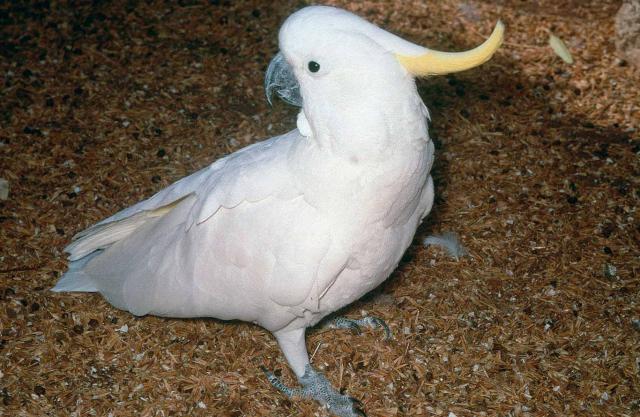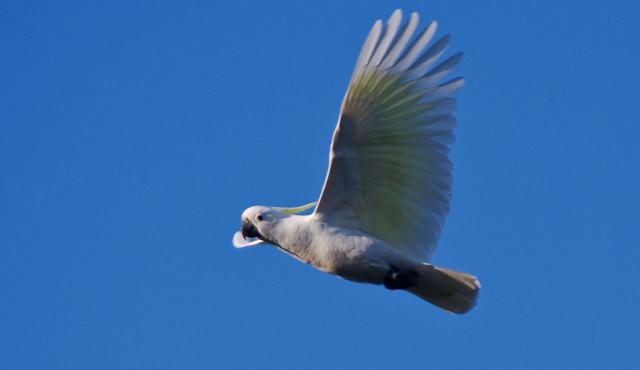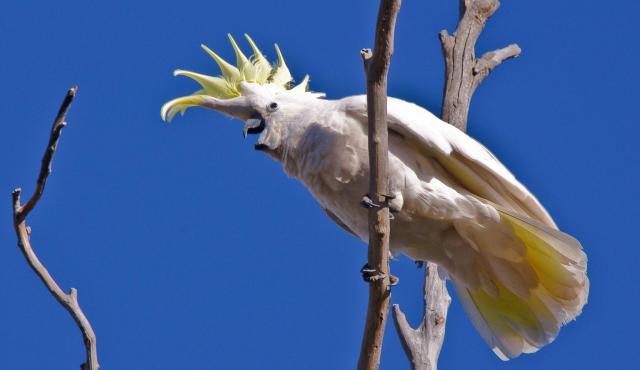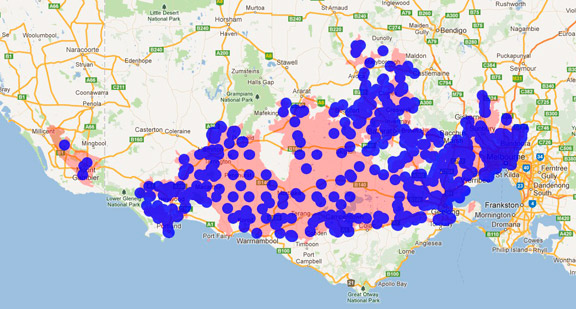A range of teacher professional learning programs will be developed to accompany the Biodiversity of the Western Volcanic Plains online outreach...




Sulphur-crested Cockatoo
Cacatua galerita
Breeds August-January in southern Australia. A gregarious species, spending much of the time in flocks. Eggs are laid in tree hollows that are prepared by both sexes. Both birds incubate and care for the chicks. Chicks remain with the parents all year round. Family groups will stay together indefinitely.
| Details | Description |
| Type | Bird |
| Group | Cockatoo |
| Other Common Names | White Cockatoo |
| Identifying Characteristics | |
| Distinctive Markings | Distinctive sulphur-yellow crest and yellowish wash on underside of wings. |
| Diet | Herbivore. Includes berries, nuts, seeds and plant roots. |
| Habitat | A variety of timbered habitats and around human settlements. |
| Native Status | Native to Australia |
| Sounds | Loud, raucous screeches and piercing, sharp sounds. |
| Taxonomy | |
| Phylum | Chordata |
| Class | Aves |
| Order | Psittaciformes |
| Family | Cacatuidae |
| Genus | Cacatua |
| Species | galerita |

Distribution maps indicate current and historic locations where species have been sighted.
Source: Atlas of Living Australia
| Conservation Status | |
| DEPI Advisory List | Not listed |
| FFG Act | Not listed |
| EPBC Act | Not listed |
The conservation status of species is listed within Victoria and Australia.
The Department of Environment and Primary Industry (DEPI) Advisory List consists of non-statutory advisory lists of rare or threatened flora and fauna within Victoria.
The Flora and Fauna Guarantee Act 1988 (FFG Act) lists threatened species in Victoria. Under the Act, an Action Statement is produced for each listed species.
The Environment Protection and Biodiversity Conservation Act 1999 (EPBC Act) is the Australian Government’s key piece of environmental legislation, listing nationally threatened native species and ecological communities.



